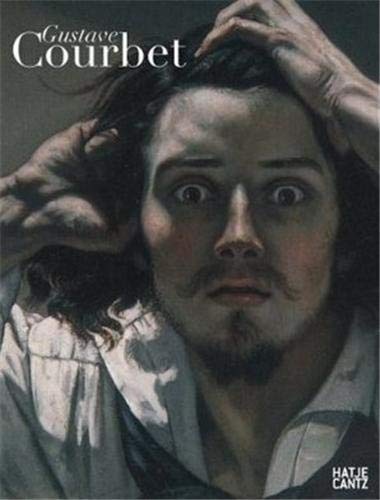All books / Book
Gustave Courbet

| Full title: | Gustave Courbet |
|---|---|
| ISBN: | 9783775721097 |
| ISBN 10: | 3775721096 |
| Authors: | Des Cars, Laurence Amic, Sylvain Calley Galitz, Kathryn |
| Publisher: | Hatje Cantz, |
| Edition: | First Edition |
| Num. pages: | 480 |
| Binding: | Hardcover |
| Language: | de |
| Published on: | 2008 |
Read the reviews and/or buy it on Amazon.com
Synopsis
nowadays It Is Difficult To Conceive Of The Impact That Gustave Courbet S Paintings Made On French Art Of The Mid-nineteenth Century. At Once Casting Himself As Revolutionary, Bohemian And Peasant, Courbet (1819-1877) Overturned A Deeply-entrenched Tradition Of Academic Painting In France, And, Eschewing The Romanticism Of Delacroix And The Neoclassicism Of Ingres, Coined Instead An Idiom He Named Realism. Realism Was Not Pretty, Classically Proportioned Or Literary; Rather, It Confronted The Conditions Of Rural Working Life, Then An Unimaginable Subject For Art. The First Masterpiece Of This New Style Was Burial At Ornans (1849-1850), A Colossal Anti-epic That Depicted An Ordinary Funeral In Courbet S Home Town. The Contrast Between The Work S Scale And Its Subject Matter Was Pronounced, And Its Murky Earth Tones Struck Critics As Willfully Ugly -- A Defining Reaction That Would Recur Throughout The Modern Period, Particularly In The Reception Of Early Works By Manet And Picasso. Courbet S Palette Emphasized Mass And Body Politically--that Is, In A Manner That Affirmed The World Itself Rather Than The Transcendence Of It. His Equally Famous The Origin Of The World Of 1866, Which Presented The Female Genitalia Close-up, Made This Stance Explicit. The Conceptual Beginnings Of The Painting Of Modern Life Are As Much In Courbet S Realism As In Charles Baudelaire S Famous Essay Of The Same Name.
In This New Assessment, Published On The Occasion Of A Major 2008 Traveling Exhibition, Renowned Experts Shed Light On The Development Of Courbet S Realistic, Critical Style And Trace His Influence On His Contemporaries And Subsequent Generations, As Well As His Relationship To Early Photography. At 480 Pages, This Monumental Volume Provides A Long-overdue Reckoning Of This Great Artist S Work.
the Barnes & Noble Review
the Conquering Spirit Of Our Modern Painting Derives From Courbet. These Are The Words Of The Greatest Of Modern Art Critics, Julius Meier-gräfe, About The Most Difficult Of 19th-century Painters, Gustave Courbet (1819-77). Difficult, Because While Courbet Painted Some Of The Most Startling And Beautiful Paintings Of His Time, He Also Made Some Of The Worst To Bear The Signature Of A Master. These Disparities Have Produced Innumerable Flights Of Fancy From Art Historians And Have Been Explained By Everything From The Artist S Provincial Origins To His Political And Social Theories To His Ironic Formalism. A New Generation Of Scholars Is Now Focused On Courbet S Use Of Modern Media And Marketing To Establish Himself As A Succès De Scandale. Once He Had Achieved Fame, He Put Less And Less Effort Into Pictures And Became, As He Wrote Of Himself In 1853, The Proudest And Most Arrogant Man In France. This Post-political View Of Courbet Informs The Large Exhibition That Was Organized In France And On View At The Metropolitan Museum Of Art In 2008. The Sumptuous Accompanying Catalogue Is The Best Summary Of Courbet's Life And Work To Date. It Includes Excellent Essays On His Politics; His Relations With His Key Patron, Alfred Bruyas; His Use Of Photography; And His Influence On Painters Like Manet, Monet, And Cézanne. And With More Than 500 Illustrations, The Book Is The Most Gorgeous Possible Guide To Courbet. To Understand Him, You Ll Still Need To Go To Paris To The Musée D Orsay And To Montpellier To The Musée Fabre, Which Between Them Hold A Majority Of The Key Pictures, But This Catalogue Is The Next-best Thing. --robert Messenger